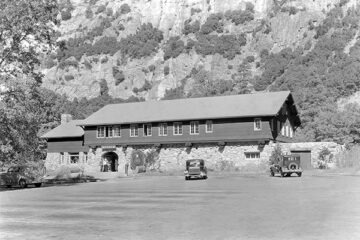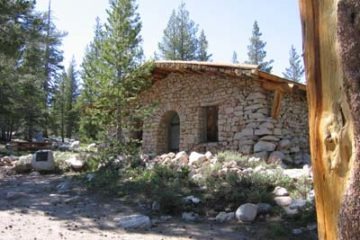We spend a lot of time on this blog looking forward, at efforts to protect Yosemite for the future, and looking back, reflecting on projects that our supporters and partners have made possible over the years. For today, we’re taking a trip back through time to look at a few projects that get at the heart of what makes Yosemite special: its combination of inspiring scenery, pristine ecosystems, diverse plants and animals, and boundless opportunities to explore natural and cultural history.
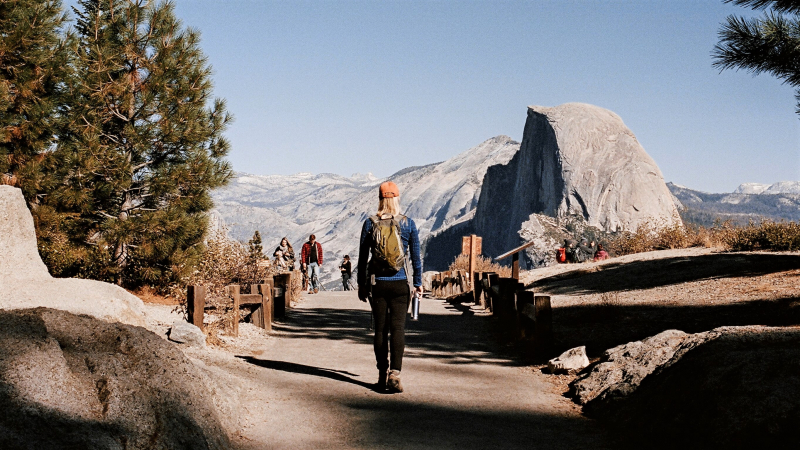
A short walk to inspiring views at Glacier Point. Photo: Christopher Michel
Many people start their Yosemite journeys at one of the park’s scenic overlooks — so that’s where we’ll start, too. Our “Preserving Your Yosemite Views” post recaps several major donor-supported restoration projects at classic viewpoints, but here’s a quick refresher:
- A multiyear renovation at Glacier Point in the 1990s transformed the popular spot on the south rim of Yosemite Valley with a new amphitheater, accessible trails, educational exhibits, native plants and more.
- In the mid-2000s, crews working at Tunnel View, the endlessly photogenic west Valley viewpoint, improved pedestrian and vehicle safety, restored nearby habitat, and installed a new bronze relief map.
- Over two years (2005-2006), a restoration project at Tioga Road’s Olmsted Point repaired the eroding viewing area, which had been damaged from years of harsh weather (and burrowing marmots); added educational exhibits; and improved accessibility.
We didn’t touch on Half Dome View in that original post, but it’s worth a mention (and a visit)! Though perhaps less well-known than other overlooks, this viewing area along Big Oak Flat Road offers a spectacular look at … Half Dome (and other prominent features, including El Capitan). With support from our donors, a 2009 restoration project helped improve traffic flow; created a more formalized and environmentally sustainable viewing area, restored informal trails and limited erosion, and added interpretive elements, including a bronze sculpture of the instantly recognizable granite icon looming at the far end of the Valley.
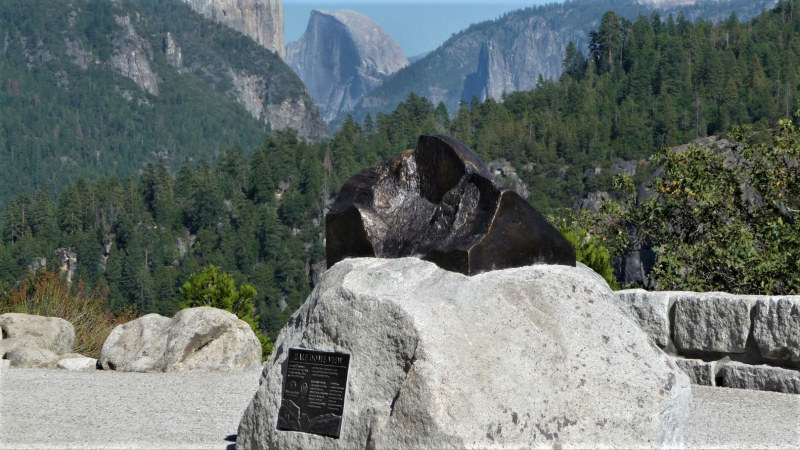
Half Dome View, an overlook on Big Oak Flat Road. Photo: Doug Nelson
If you can tear your gaze from the magnificent vista at Half Dome View, head up Big Oak Flat Road toward Crane Flat, where you’ll approach two of Yosemite’s giant sequoia groves. Both the Merced and Tuolumne groves have benefited from donor-supported restoration and research projects. Park crews, with help from volunteers and interns, have removed informal trails, repaired “tree graffiti” and revived damaged habitat, while educating visitors about steering clear of sequoias’ shallow roots. Meanwhile, scientists have carefully counted seedlings and analyzed environmental samples, searching for clues to conditions that help the giants thrive. At Tuolumne Grove (off Tioga Road), you’ll also find a renovated trailhead area, complete with a cross-section of a sequoia trunk that provides an immediate sense of the trees’ massive scale.
And of course, we can’t mention these towering trees without a quick virtual trip to the park’s southwestern corner to highlight Mariposa Grove, where a major, multiyear restoration project, focused on restoring sequoia habitat and natural hydrology (including in formerly paved areas), revamping the trail system, and adding a suite of educational exhibits, wrapped up in June 2018.
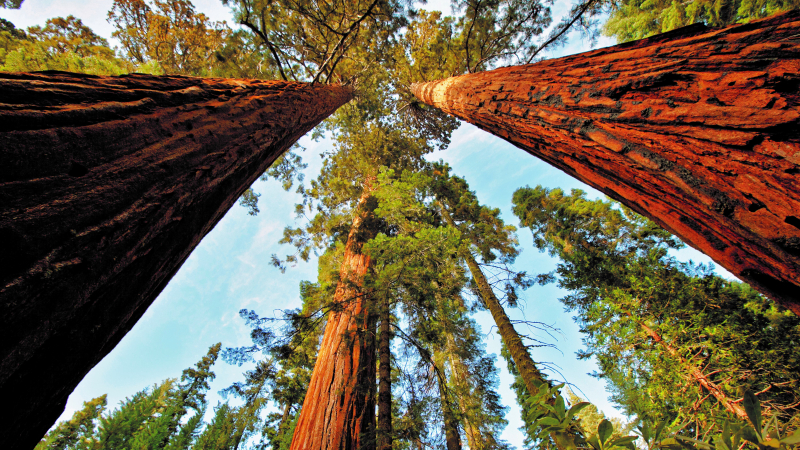
Gazing up at giant sequoias in Yosemite. Photo: Ted Soqui
Okay, detour over. Let’s head back north! Venture east on Tioga Road to Tenaya Lake, a scenic showstopper at 8,150 feet. As you meander along the edges of this granite-wrapped mile-long lake, you’ll come across evidence of several years of grant-funded work: an accessible trail leading to a serene picnic area and sandy beach on the park’s eastern end, where native vegetation is rebounding; a scenic trail along the south shore; and a wooden boardwalk over wetland habitat on the western side. The final phase of restoration work will close the pedestrian loop around the lake.
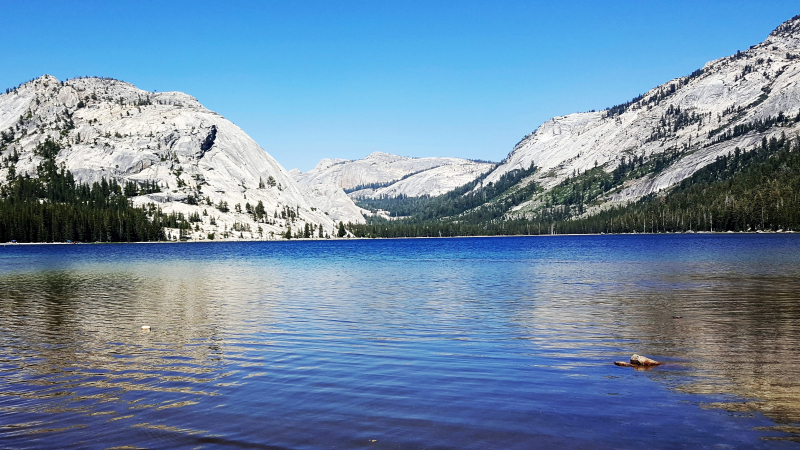
Tenaya Lake. Photo: Gretchen Roecker
Continue east on Tioga Road until you reach Tuolumne Meadows, home to grazing deer, historic Parsons Memorial Lodge, and stunning views of high country mountains. Take a day hike to see Cathedral Peak (7-9 miles round trip). As you approach your postcard-perfect destination, a jagged turret piercing the sky above a pair of clear, still lakes, the evidence of grant-funded restoration work will be what you don’t see.
Until relatively recently, the John Muir Trail cut through the meadow east of Upper Cathedral Lake, fragmenting the habitat. Nearby, a patchwork of gullies, eroded areas and informal paths marked the base of the peak. Starting in 2010, crews relocated the primary trail out of the wetland ecosystem and into an adjacent forested area, repaired ruts in the meadow, and delineated a clear, durable route for adventurers aiming for the peak’s steep slopes. Both projects are examples of the habitat and trail restoration work donors have made possible over the years!
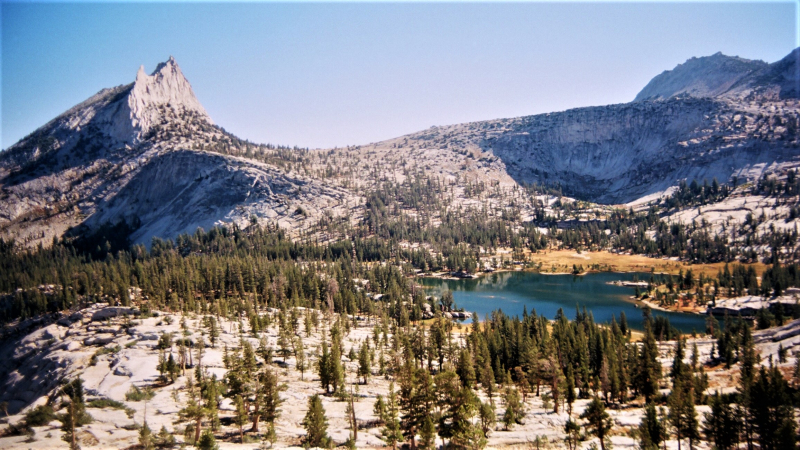
Cathedral Peak and Upper Cathedral Lake. Photo: Drew Schneier
Before you leave the park, make your way into the Valley and spend some time at the base of Yosemite Falls. In the early 2000s, a restoration project transformed the approach to the lower fall, resulting in a wide accessible trai, new wooden bridges, a small amphitheater and dozens of acres of restored habitat. Depending on the season, you might feel the cool spray as you near the end of the path; in spring, the thunder of water crashing down the wall can be almost deafening. Whether or not the falls are flowing, try pouring water into the metal grooves on the bronze relief map (another element of the restoration project) to see how rain and snowmelt make their way through Yosemite Creek and down into the Valley.
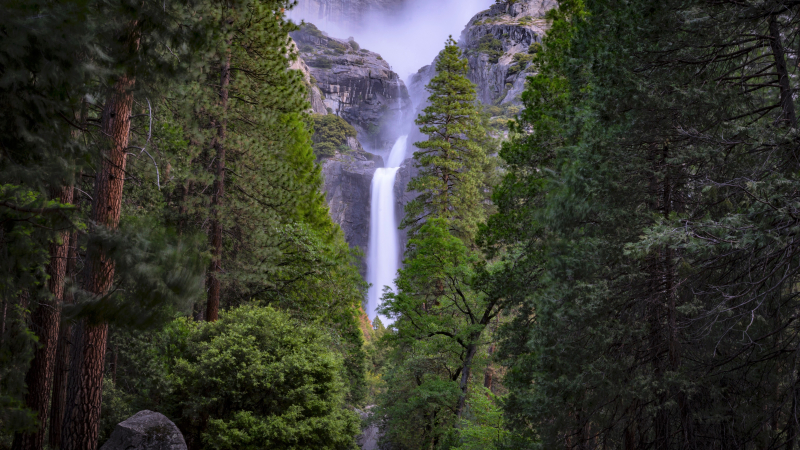
Lower Yosemite Fall. Photo: Perry Kibler, on Unsplash
Time for one last stop? Take a short jaunt to the Yosemite Museum. In 1923, an association was formed to handle funds for the construction of the museum in the Valley. That association evolved through several iterations over the ensuing decades, but continued to support and partner with the National Park Service in Yosemite; today, it lives on as Yosemite Conservancy.
Before you enter, look for the giant sequoia cross-section (from a tree that fell in Mariposa Grove in the early 1900s) and the museum’s 1924 cornerstone. Inside, learn about American Indians who lived in Yosemite for thousands of years, and peruse the regularly updated gallery shows. While our donors have funded several special exhibits, including a celebration of the building’s 90th anniversary, most museum-related grants support critical behind-the-scenes work to digitize, preserve and share the park’s vast historical collections.
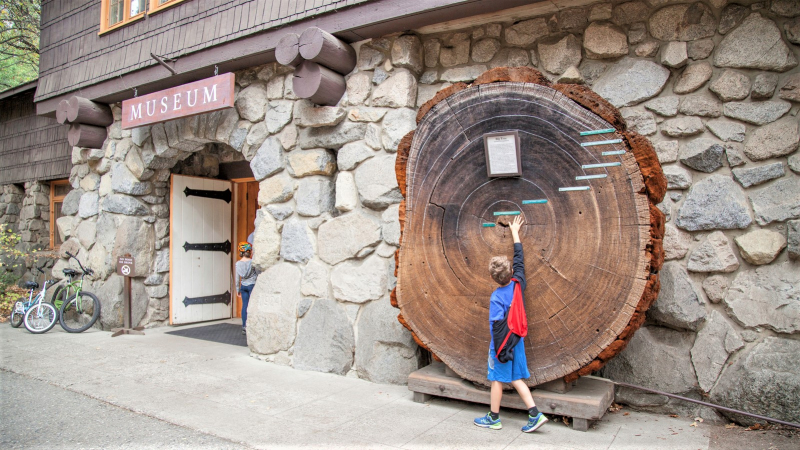
At the Yosemite Museum, opportunities for learning start before you even enter the building. Photo: Yosemite Conservancy/Keith Walklet
All of these projects speak to our core vision: ensuring Yosemite’s grandeur through the ages. By supporting efforts to protect natural resources and inspire new stewards, our donors help make that vision a reality.
The heart of Yosemite isn’t a tangible place. It isn’t limited to the park’s most recognizable features, or to its geographic center (Mount Hoffmann). Instead, it’s woven throughout the park, in the webs of life thriving in meadows and sequoia groves, in the glacial stories etched on peaks and domes, and in the cycle of fresh water passing through lakes, rivers and wetlands. It’s alive in the beating hearts of black bears and bluebirds and butterflies. And it’s in you, too, in the wonder you feel when you gaze out over hundreds of square miles of protected land and recognize the role you can play in preserving this place for future generations.

